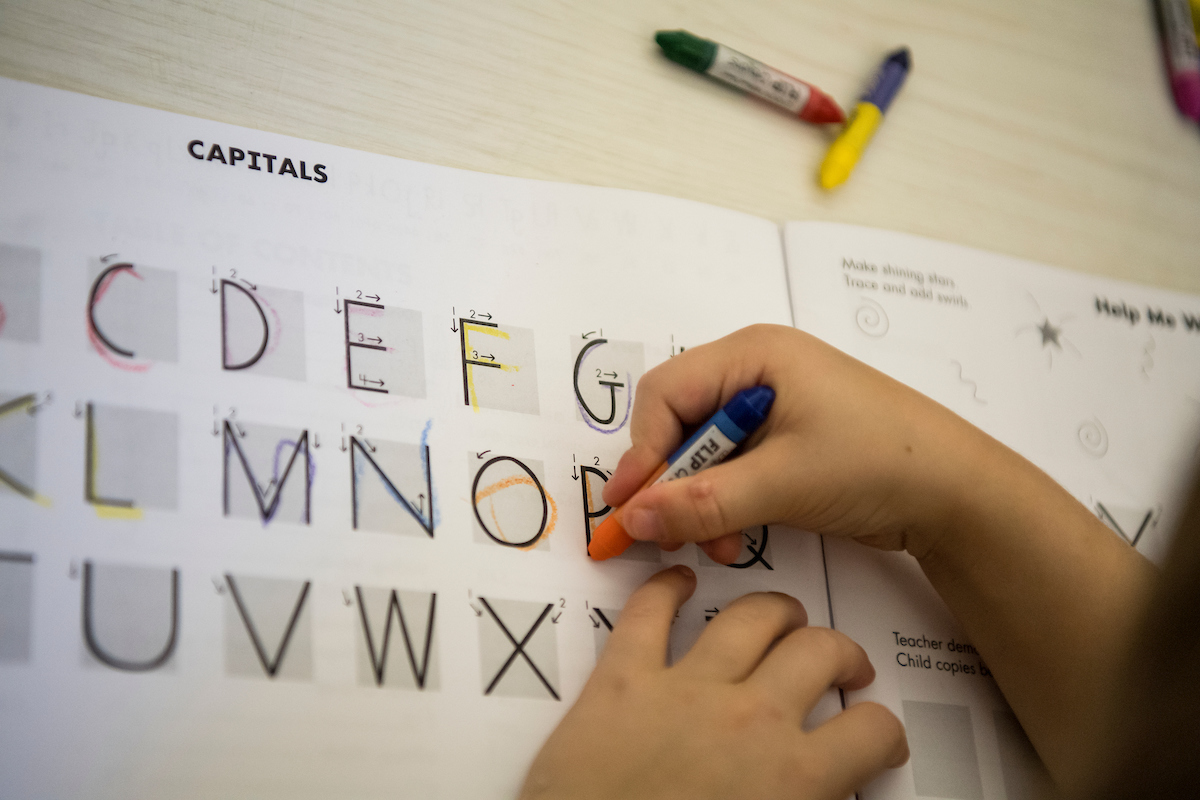As of September of 2020, 1 in 54 students is likely to be diagnosed with autism spectrum disorder (ASD). While autism’s symptoms vary from person to person and have a wide range of severity, it is prevalent within all groups of people and backgrounds. One of the common ways autism is most clearly displayed is within communication skills, especially during a child's early years of school. During early childhood education, it's very typical to see communication difficulties displayed within an autistic student’s handwriting and ability to write out the main ideas they’ve learned. Improving handwriting within autistic students is key for helping them build confidence within their studies and communicate the concepts they learn along the way.
How Does Autism Affect Handwriting?
Autism can affect handwriting in numerous ways such as a lack of fine motor skills which commonly translates into legibility difficulties and impacts the way students are able to organize their thoughts within their work and is often accompanied by additional learning disabilities such as dyslexia and dysgraphia which affect the student’s ability to process letters and produce written language successfully. Unfortunately, autistic students often know the information fairly well but struggle to translate this knowledge onto the actual page. Early intervention efforts are crucial to support autistic students throughout the development of their handwriting skills to avoid issues and learning delays down the line. Poor handwriting was noted in the original description of Asperger syndrome, and it has since been demonstrated that individuals with autism spectrum disorders (ASD) have impairments within multiple domains that contribute to handwriting difficulties. One study1 suggests that teaching targeted letter formation, in combination with general training of fine motor control, may be the best strategy for improving handwriting performance in autistic children. We've compiled a list of five key strategies for handwriting instruction and remediation for autistic students.
5 Handwriting Strategies for Autistic Students
When it comes to helping autistic students, handwriting strategies and a mindful approach are key for allowing the student to adequately implement handwriting lessons. Consider a few of these strategies when helping a student with handwriting difficulties.
1. Identify Handwriting Struggles
It’s important to look out for the ways these difficulties physically manifest within handwriting. Early intervention is crucial, and some signs that indicate that the student may be struggling include:
- Frantic, hurried, sloppy handwriting
- Difficulty drafting long-form composition
- Inability or unwillingness toward writing for an audience
- Hyper-focus on small details, lacking in a direction toward the bigger picture
- Large lettering and hectic line spacing, caused by complications within fine motor control
- Complications writing slowly or quickly enough
2. Start Hand Exercises and Grip Training
So much of our relationship to our handwriting is the physical manner we handle our writing utensils. Writing is a multisensory experience, and this process can often become overwhelming for autistic students. Training the student on the proper hand grip and coaching them in hand exercises is a great way to encourage handwriting progress.

3. Use Visual Organization Tools
Properly assisting the student to demonstrate and map out what they wish to communicate is key for helping with handwriting and encouraging educational growth. More often than not, autistic students don’t struggle to understand educational materials and lessons, they struggle in creating and communicating that knowledge. Visual organization tools allow this communication process to work simply and become more accessible for the student.
4. Be Patient
Handwriting complications often extend far into adulthood, so being patient with students is crucial for understanding their circumstances. Deliberate and slow teaching solutions have proven to assist the coaching process for autistic students, so remember to not rush the process along and take your time with each main idea and step.
5. Try New Strategies
Every student learns differently, so trying numerous methods to find the proper channel for progress is sometimes necessary. If you’re finding a lack of momentum, consider switching up the strategy to help approach handwriting from all angles possible. Circle back to certain handwriting basics every now and again for review, but keep the curriculum changing to avoid fatigue and support handwriting progress.
Learning Without Tears Celebrates World Autism Month

Handwriting Success
Set your students up for handwriting success with easy-to-use writing tools and industry-leading knowledge to help in every step of their educational journey. Some of the unique services that set us ahead of the rest that help with handwriting and more include:
- Remote learning materials and insight, with occupational therapy resources and programs that can help teach handwriting at home.
- Fun and engaging teaching tools that support creative learning outlets for autistic students' unique handwriting challenges.
- Digital resources and videos for handwriting, keyboarding, and Pre-K programs to help support educational growth from home.
- Online tools for students and instructors alike, to assist with the constantly-changing educational guidelines and curriculum.
Our latest workshop Is My Student Ready to Learn Handwriting? provides strategies, including boosting alphabet knowledge, tips for postural stability, ways to promote social and emotional, fine motor skills, and visual-motor integration which will enhance the foundational skills students need in order to write.